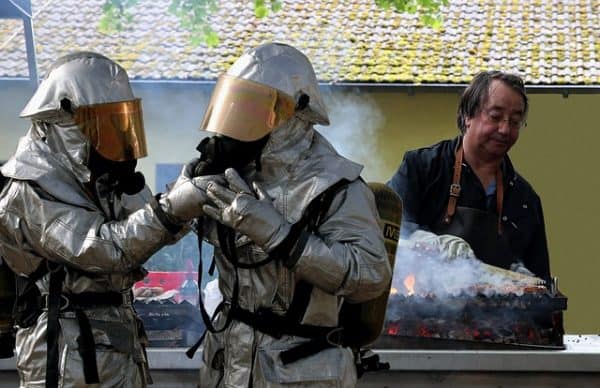A fireplace provides the practical benefit of warmth and decorative charm, but it can also increase the value of your house. Some estimates show that homeowners recoup 130 percent of the amount they invest to build a fireplace, with 78 percent of home buyers rating fireplaces as a preference. So, if you don’t have a fireplace in your home, you can have one built and installed for your convenience.

While you begin your search, the first thing to know is that fireplaces usually fall into one of three categories: zero-clearance, gas, and masonry. Before you settle on a decision to learn how to build a fireplace of any type, you must consider the various options given your project budget. Factor in your aesthetic preference, the details of your homes construction method, and your property architectural style.
Masonry Fireplaces
Wood burning fireplace inserts are costly but wood-burning masonry fireplaces are arguably the most expensive to build. It’s also considered to be the most attractive fireplaces with eye-catching designs. A masonry fireplace is composed of brick or a stone firebox, a brick or stone chimney, and a wood mantel in most cases.
In modern-day construction, is easier to build a fireplace like this. But including one in a home that already exists can have many challenges, but it’s certainly not impossible. The first thing you need to do before you begin is to identify the room that you want to locate the fireplace in, then ensure its floor joists are reinforced.
Brick and stone are not lightweight, therefore, when they are used to build an average-sized fireplace the building codes need the house frame to be changed to accommodate the increased load. Also use dense wood like oak when you start the fire, the wood you use must be stored in a dry and high place for a minimum of six months. Green woods like pine, are not recommended for fireplace burning because they produce more creosote.
Zero-Clearance Fireplaces
Compared to masonry fireplaces, zero-clearance fireplaces are a lot easier to install and also more affordable. This is because they are lightweight and have firebox enclosures that remain cool all the time. Zero-clearance fireplaces can be placed directly over hardwood floors and within a few inches of existing walls.
Gas Fireplaces
Although gas fireplaces don’t have the sounds and aroma of a wood fire, they can create a beautiful ambiance and usually supply more warmth compared to a wooden fireplace. Additionally what makes them really great is that they are easier to start.
Further to this, gas fireplaces have become popular due to their environmental friendliness. Compared to a wood-burning fireplace, they cause less pollution. This is because gas fireplaces have thermostatic controls, allowing the homeowner to operate the fireplace as though it is a traditional heating system.
In closing, regardless of the decision you take on how you want to build your fireplace, it’s important to familiarise yourself with the maintenance and cleaning techniques required for it to work safely and efficiently for your home and convenience.
 Gearfuse Technology, Science, Culture & More
Gearfuse Technology, Science, Culture & More


